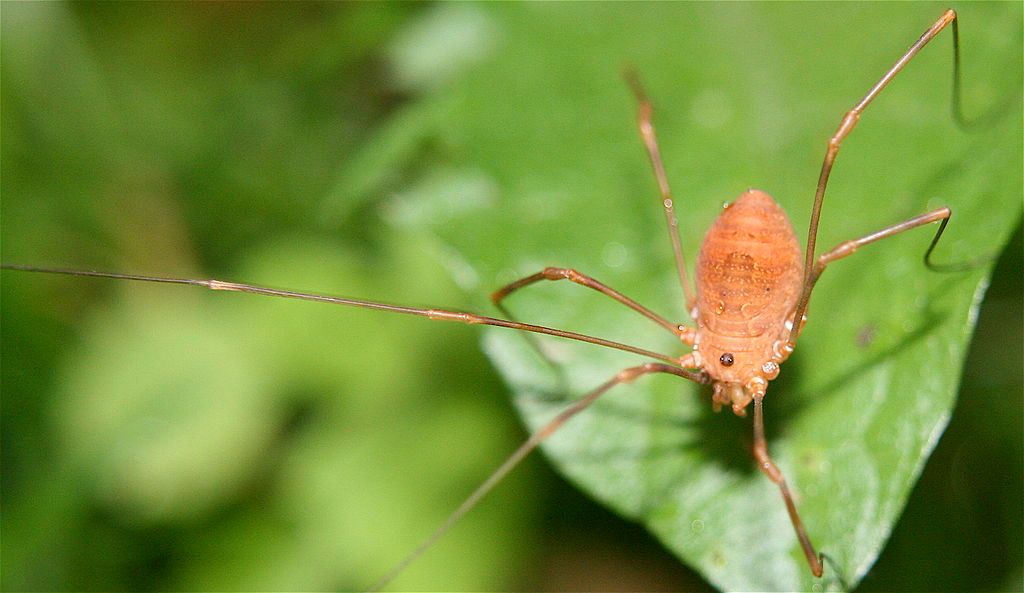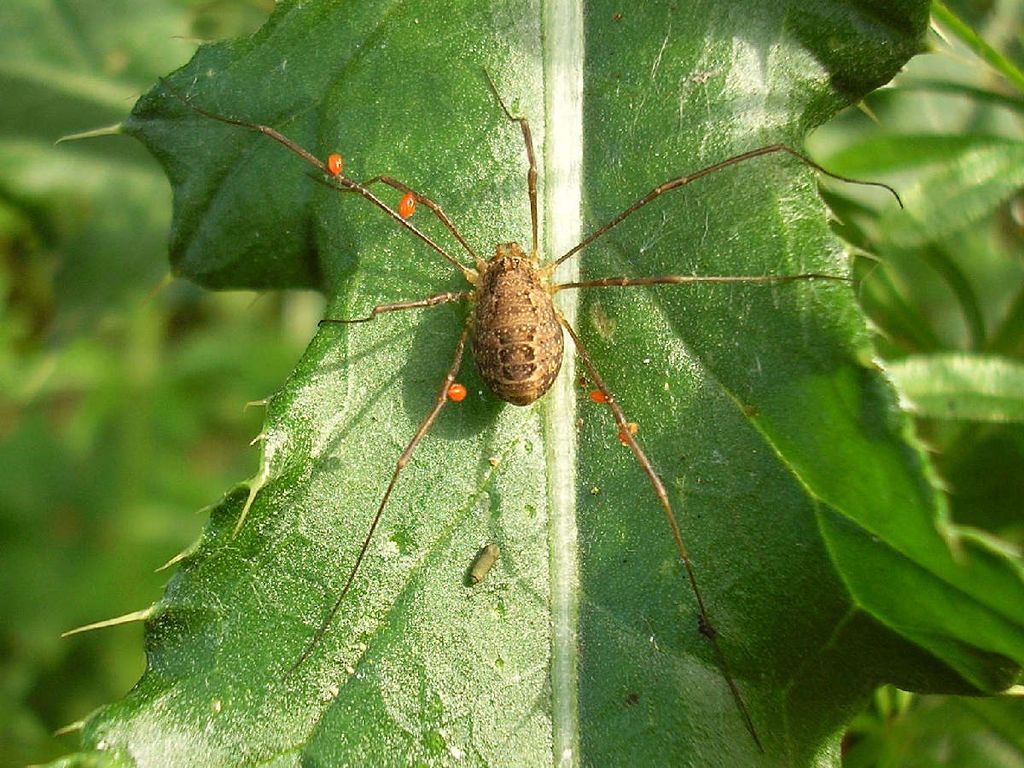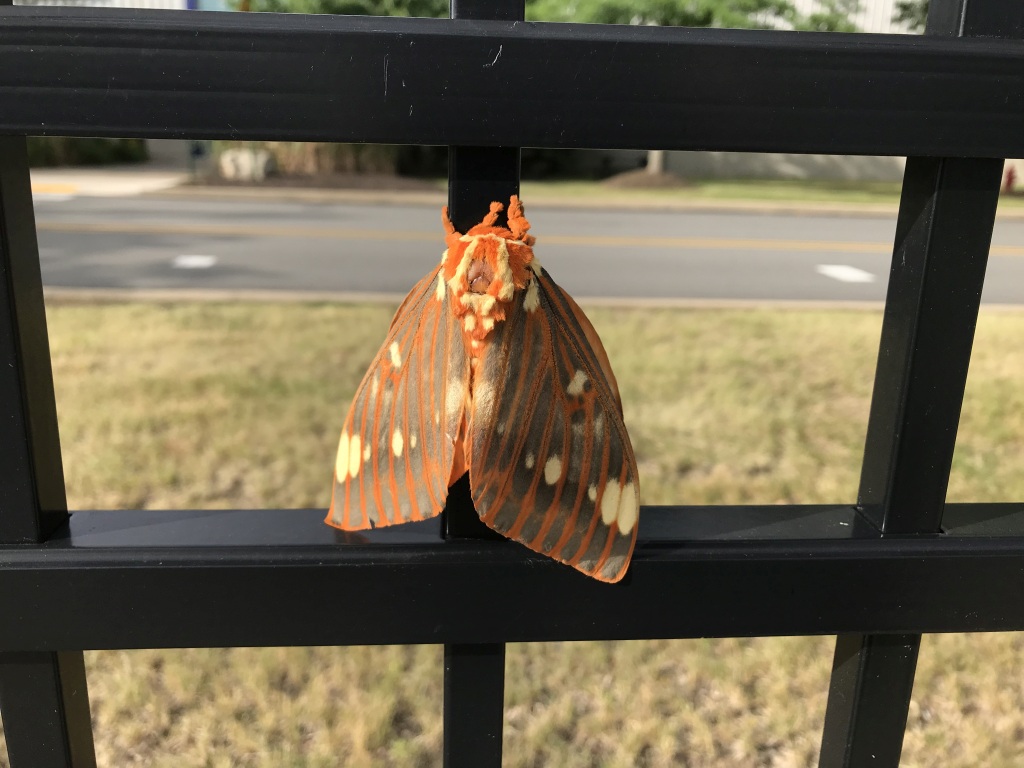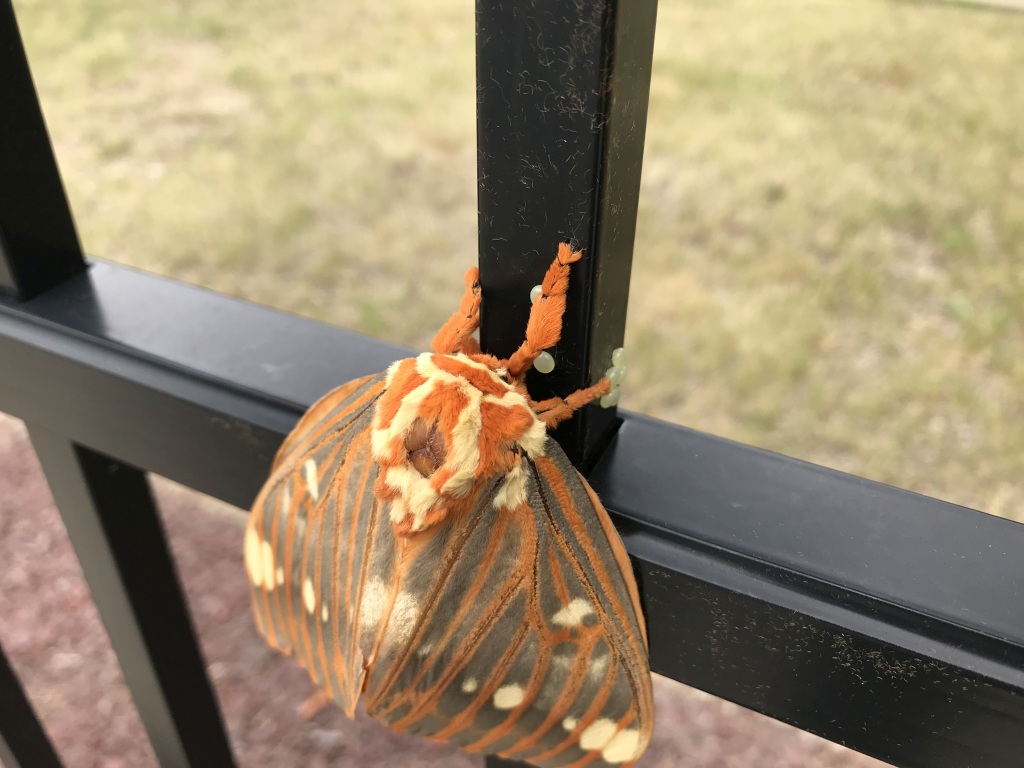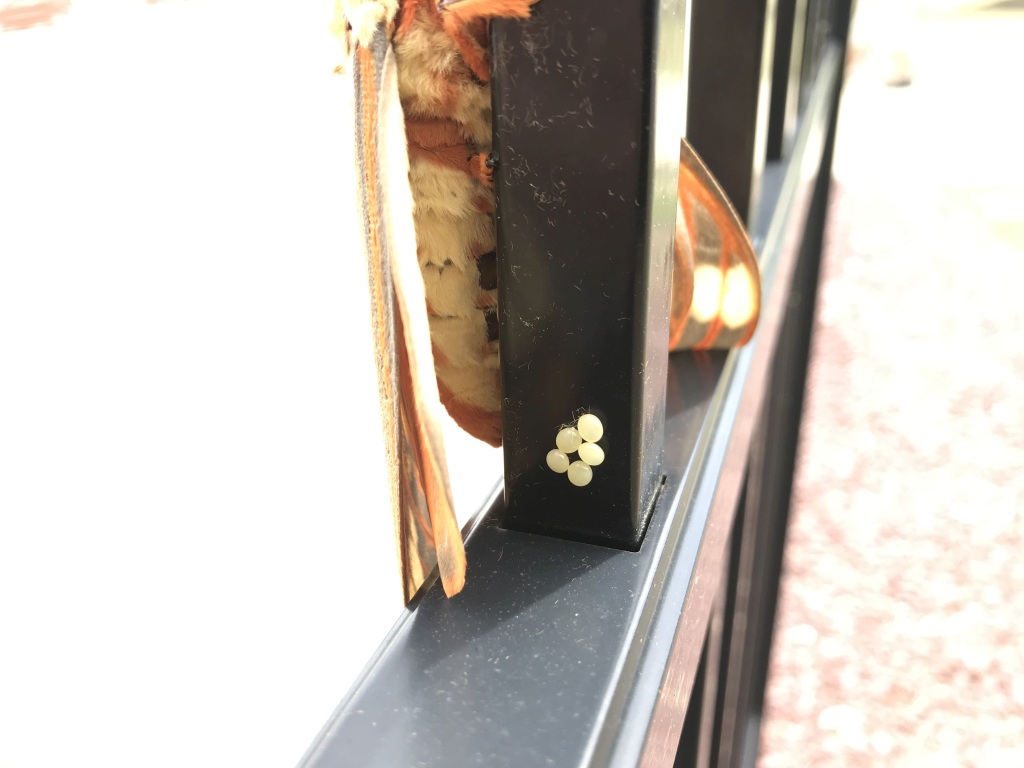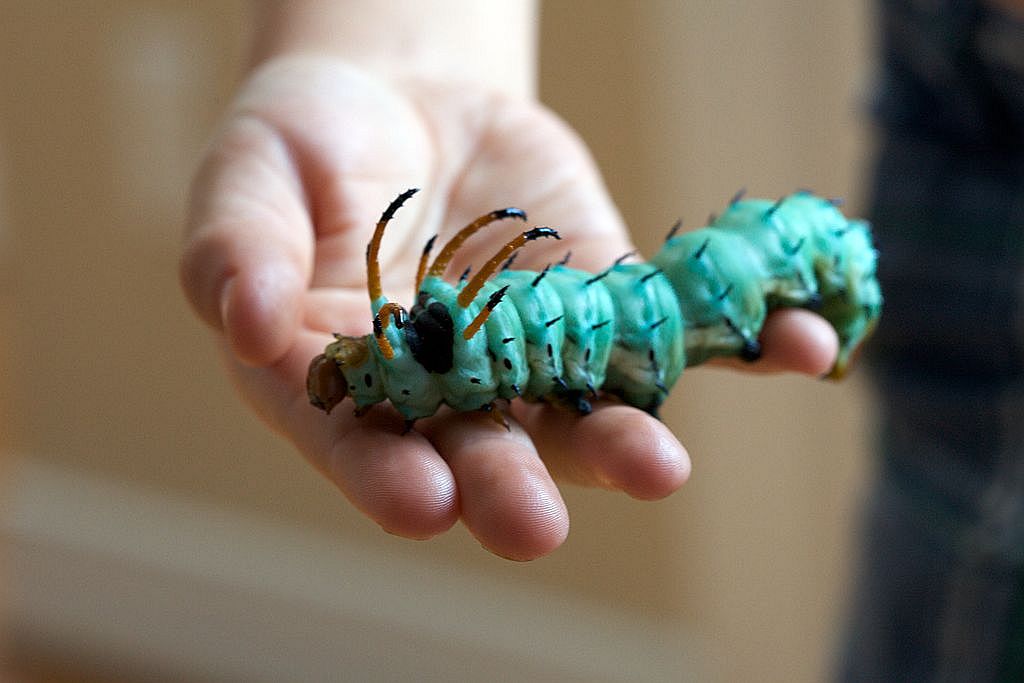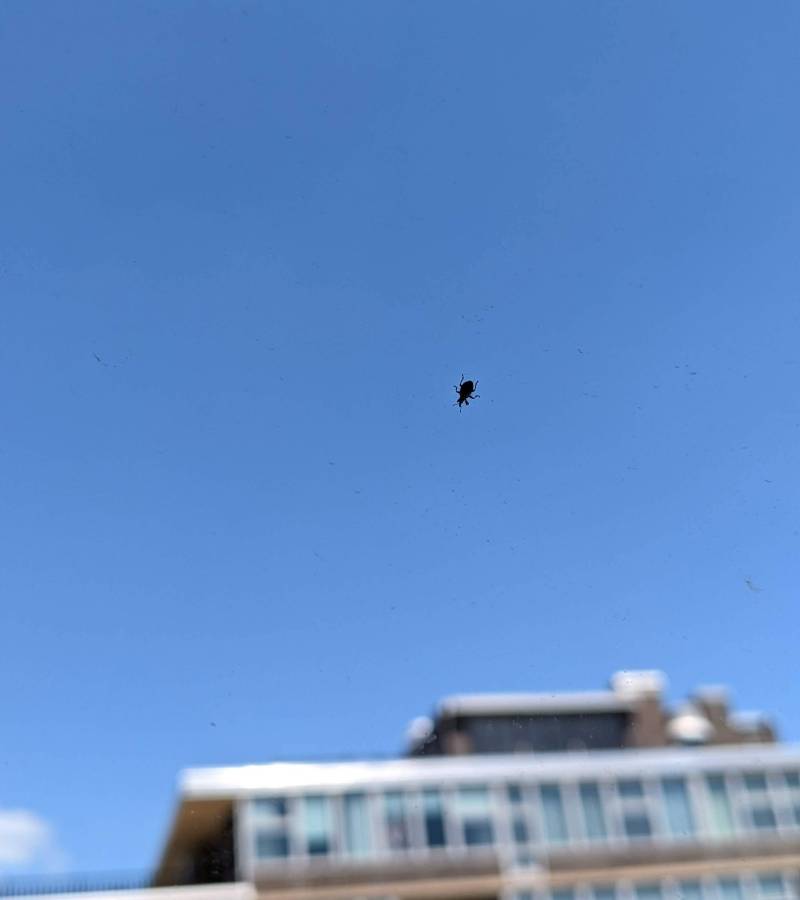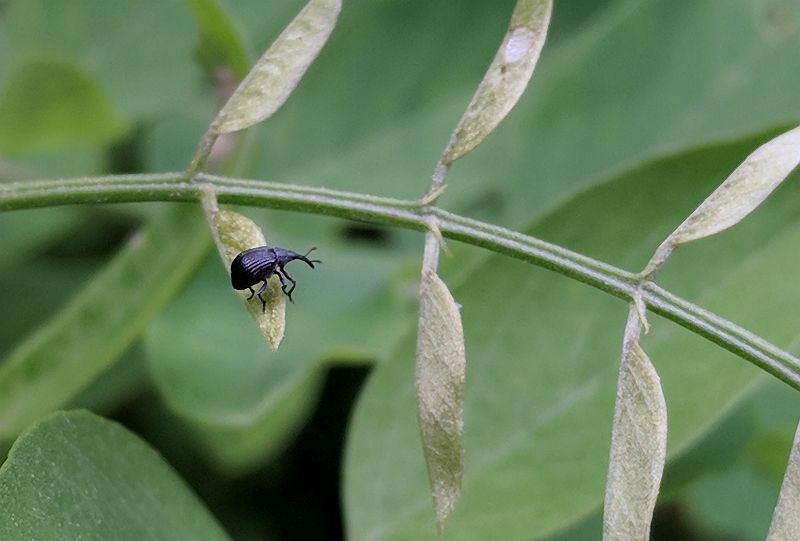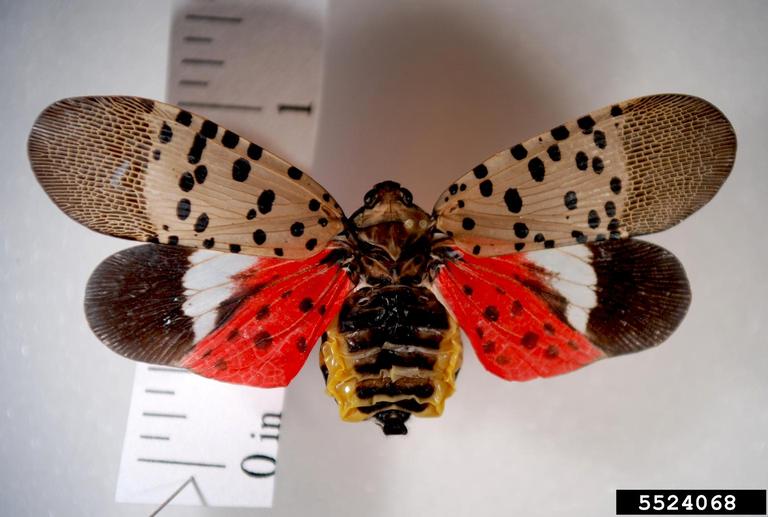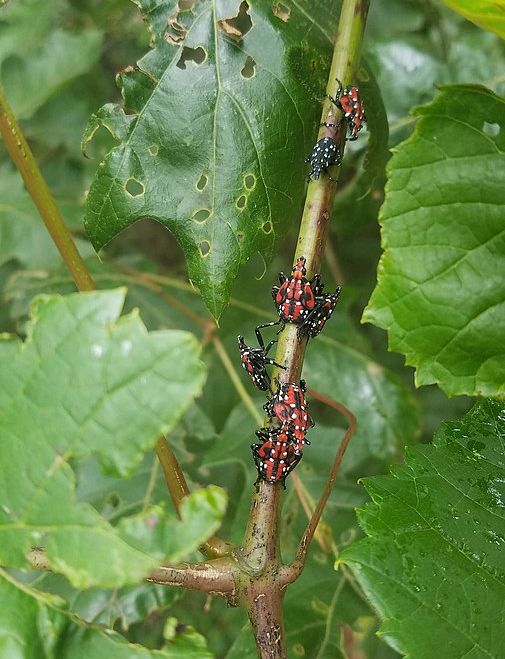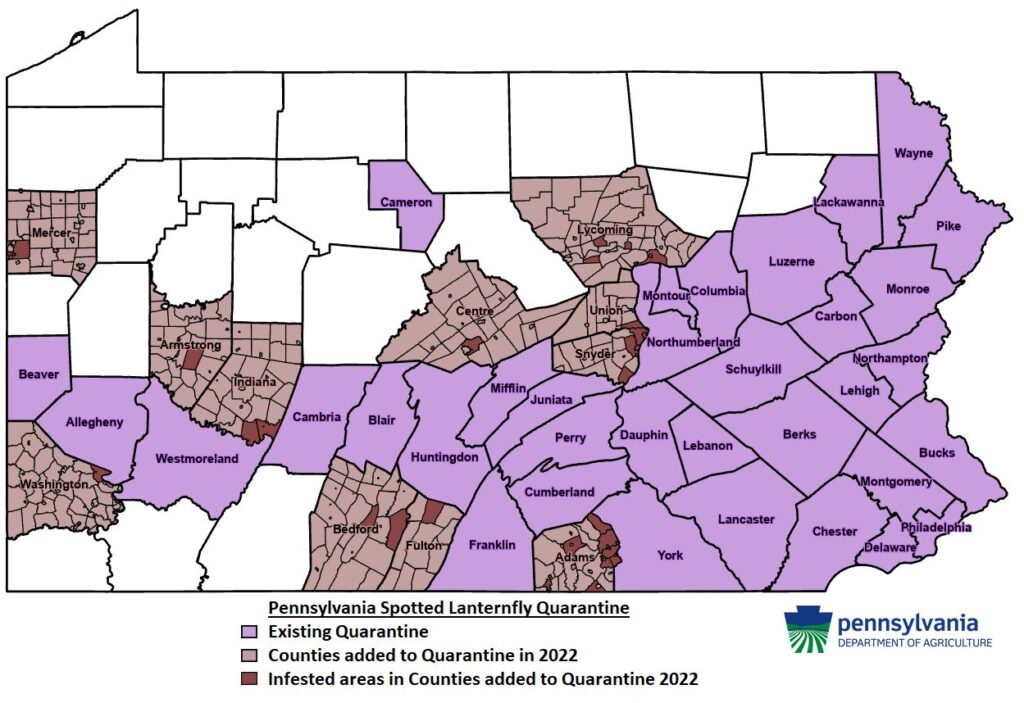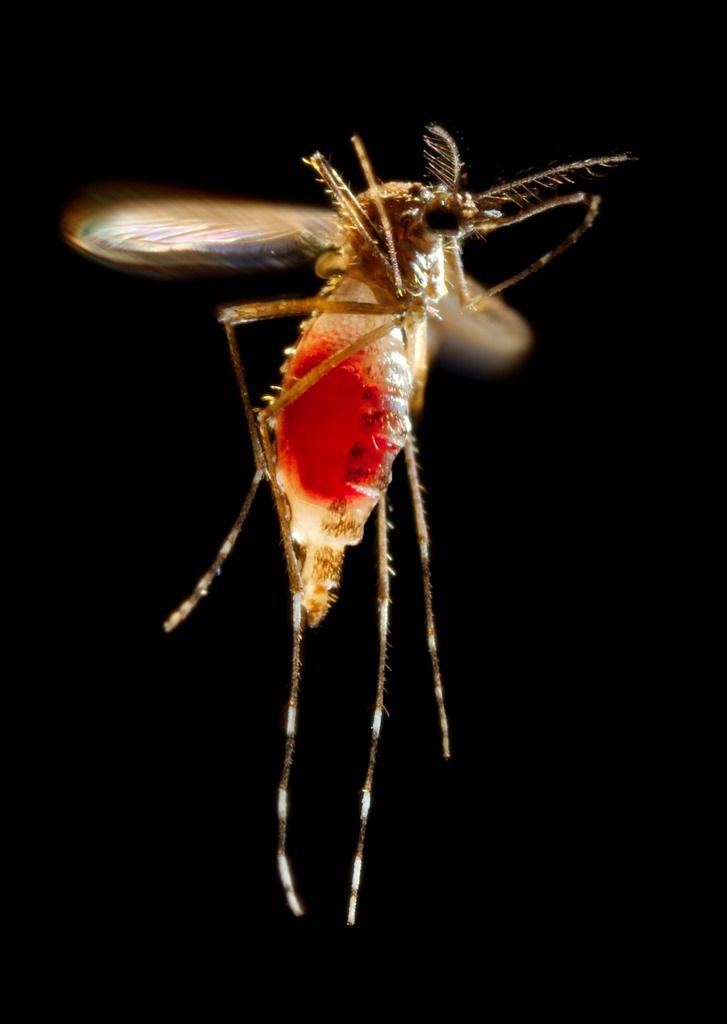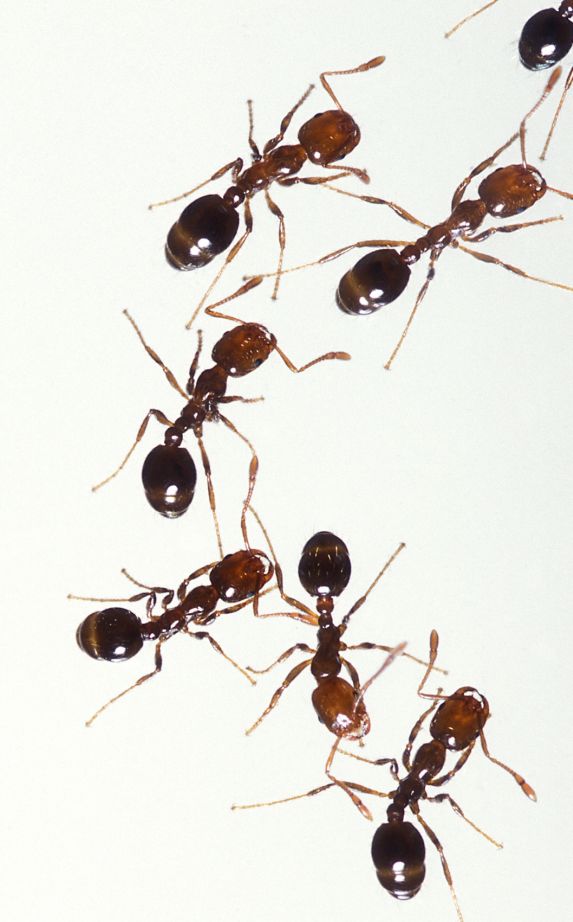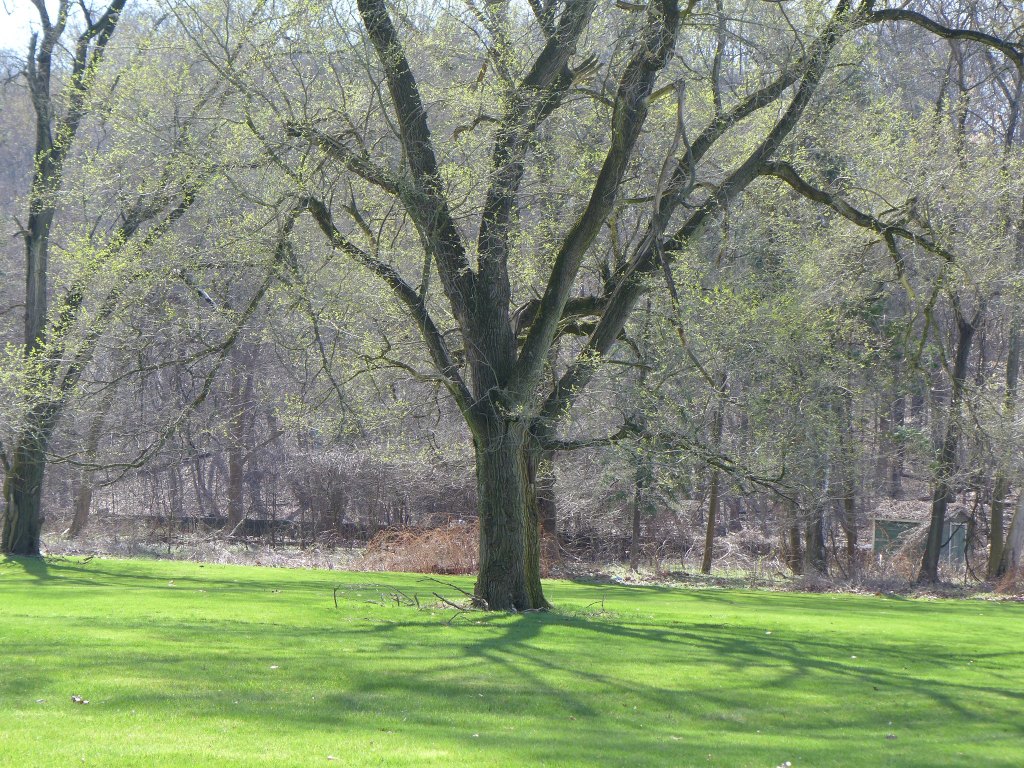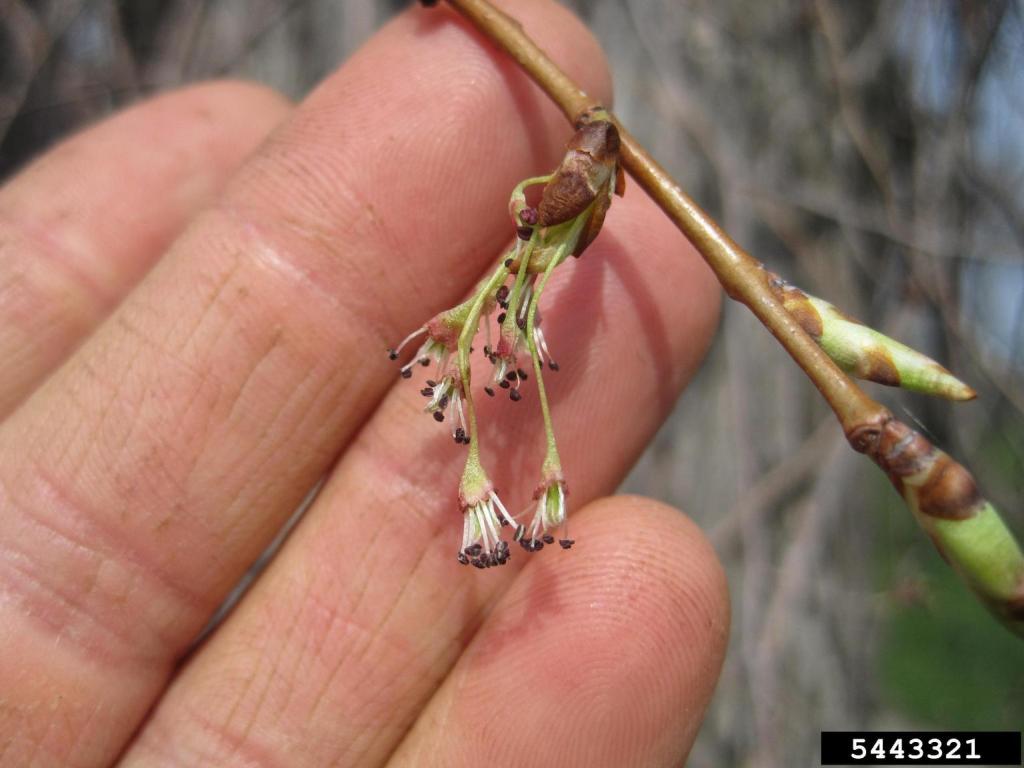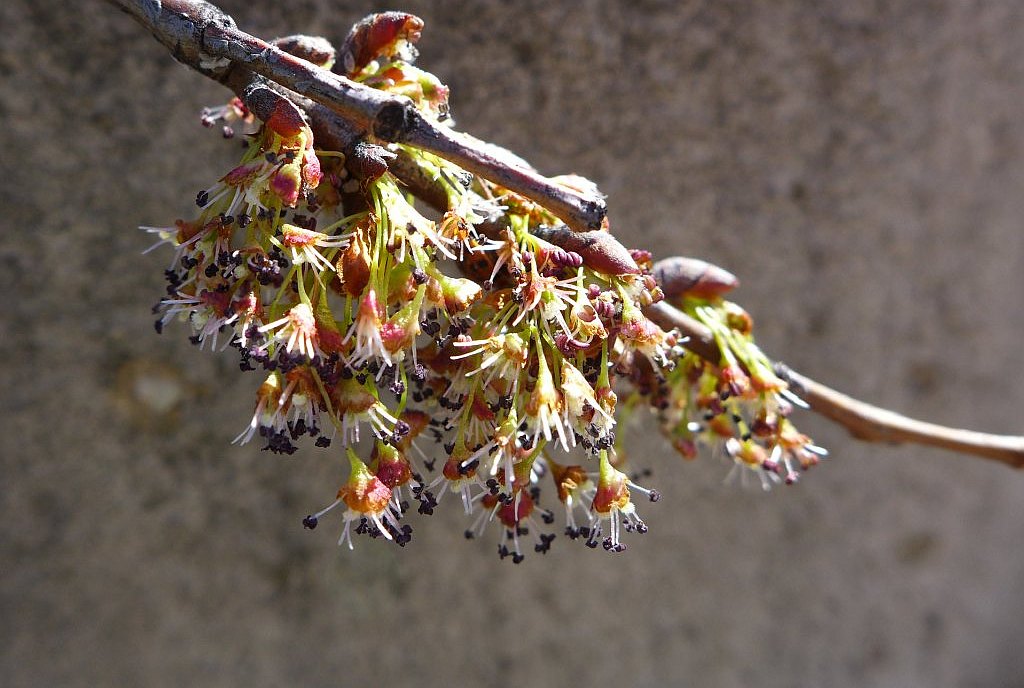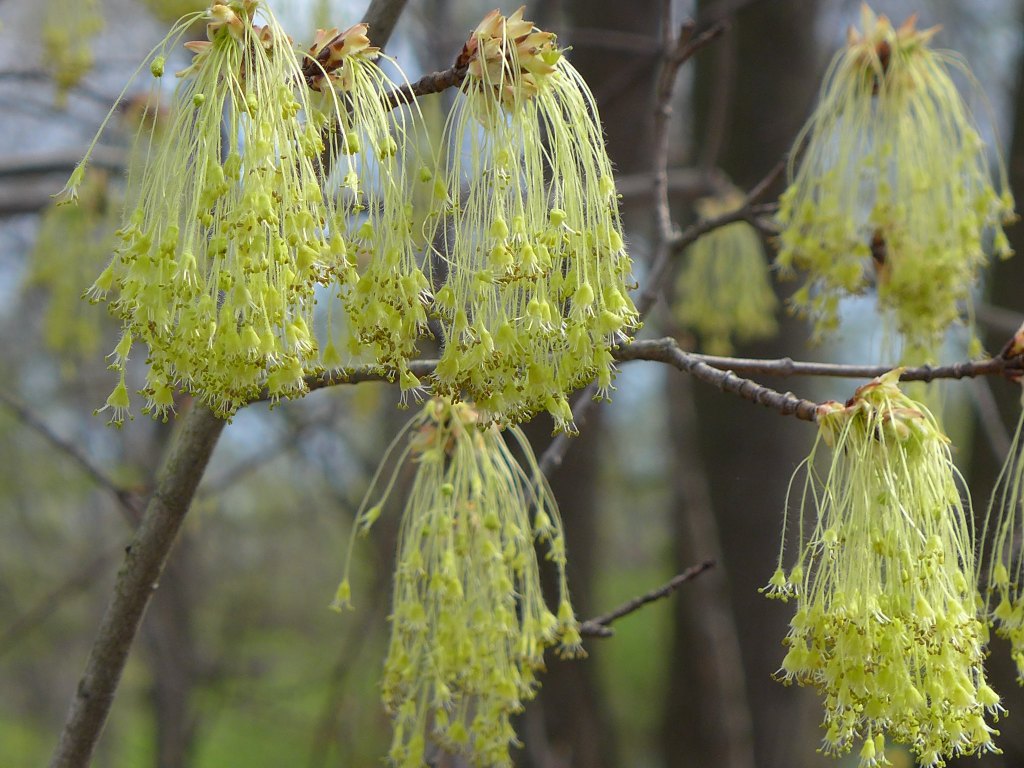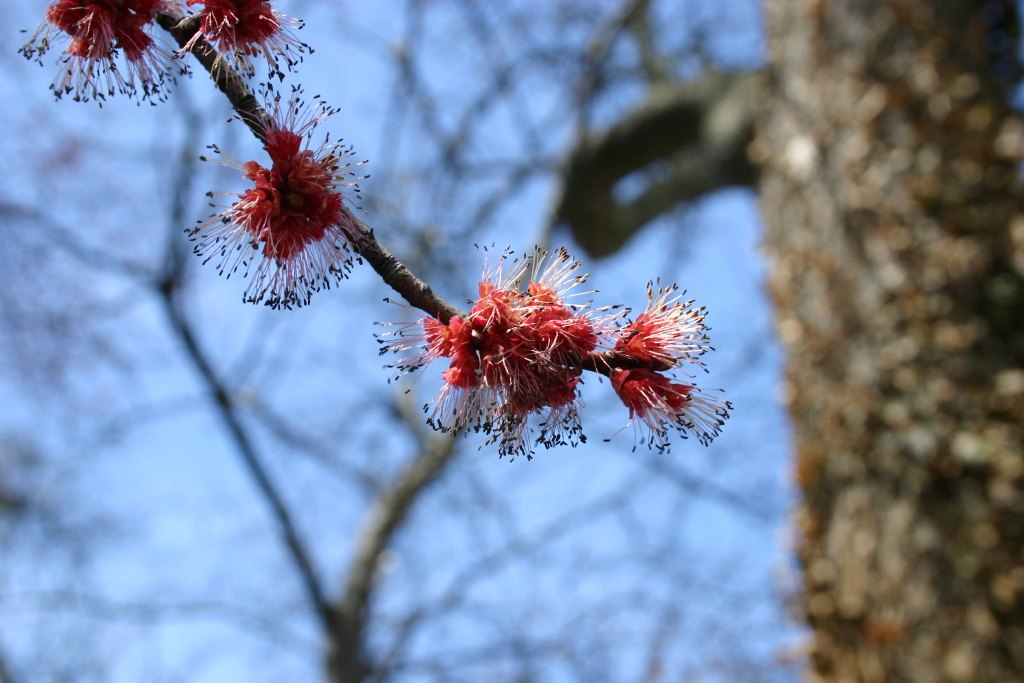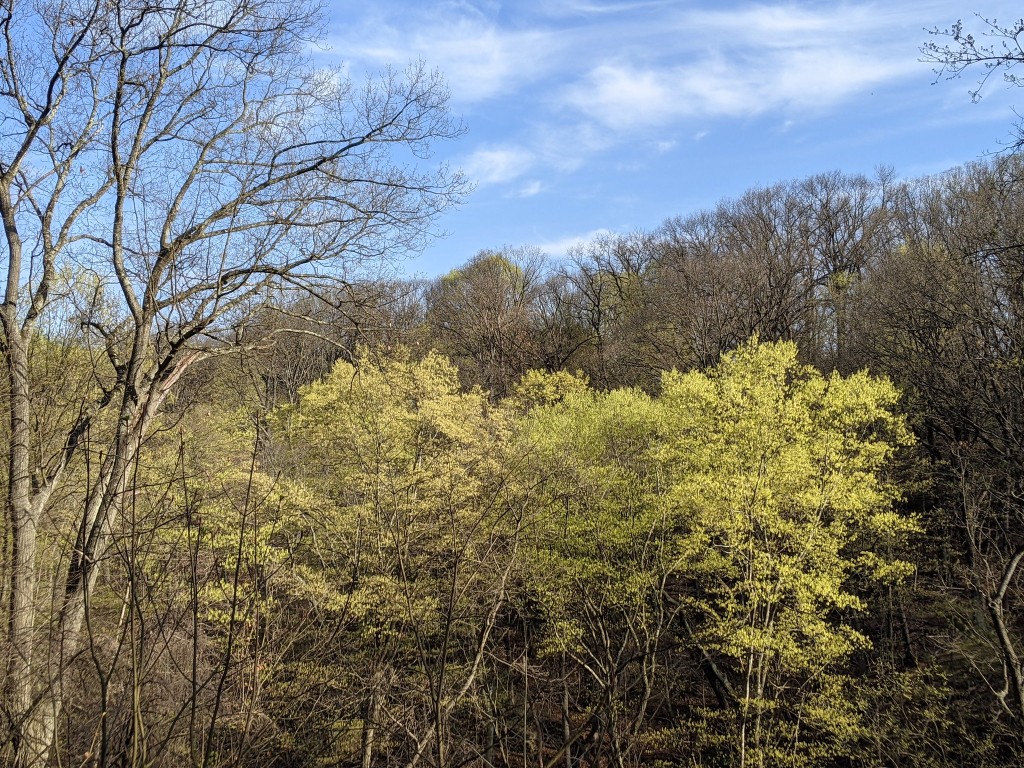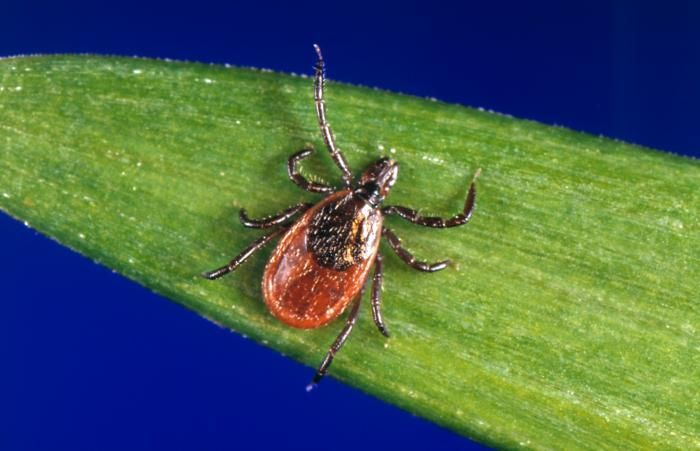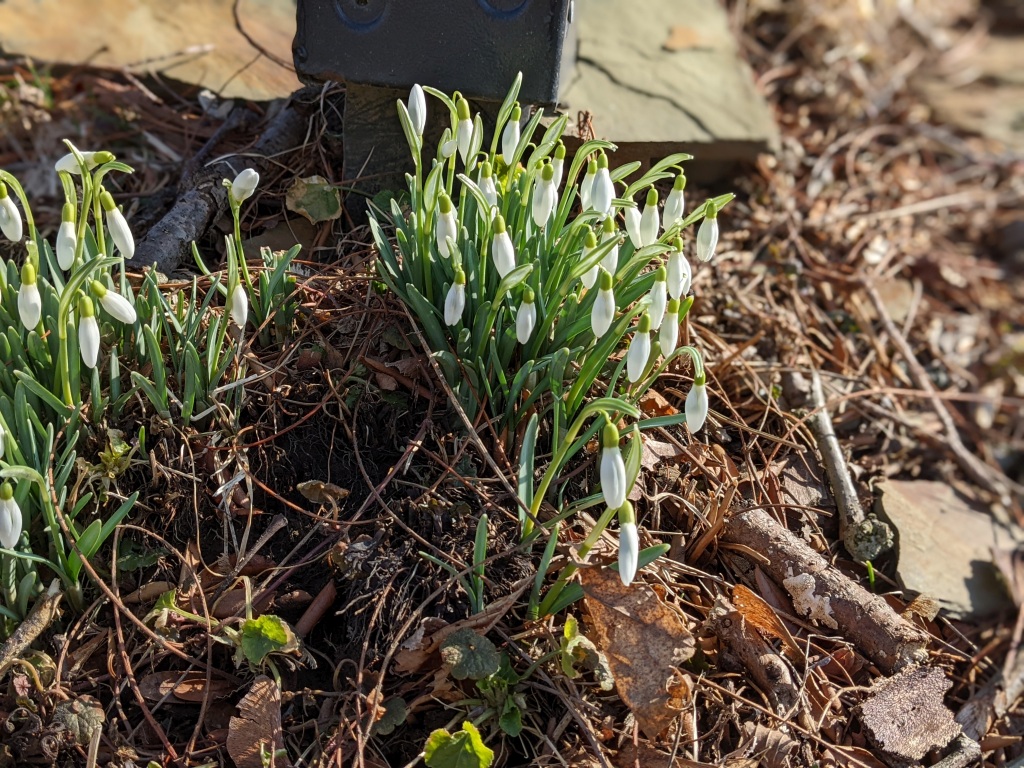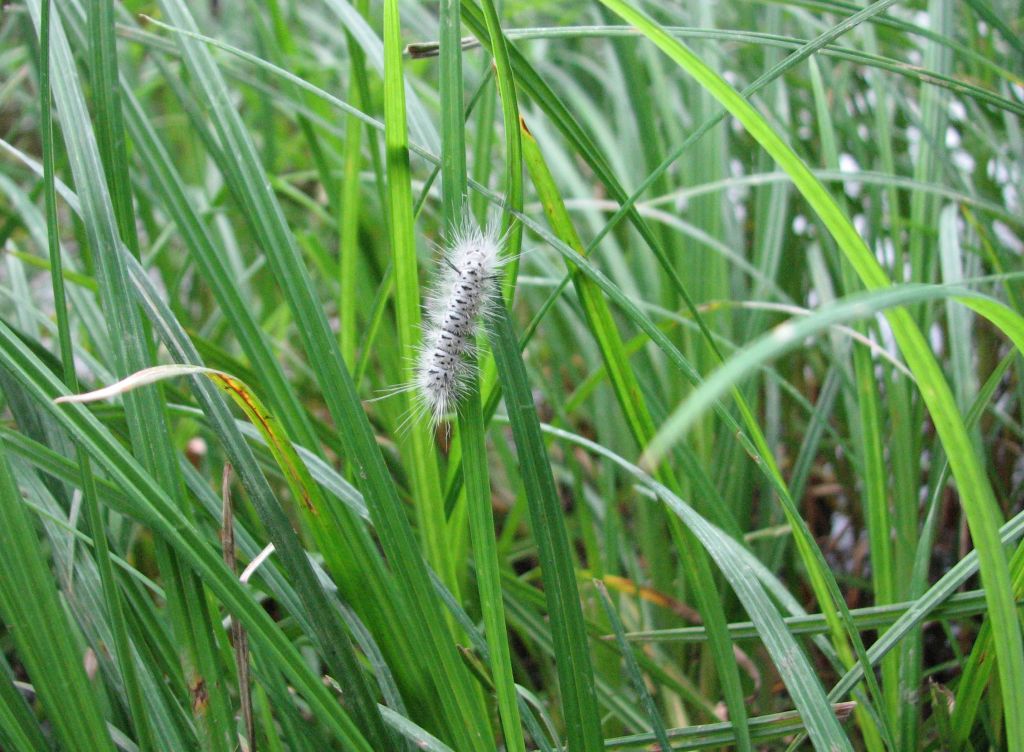
17 July 2022
Have you noticed small white caterpillars this month, suspended on invisible threads from the tree canopy and swinging in the breeze? You might see only one but there are others nearby dropping from the same tree. These are hickory tussock moth caterpillars (Lophocampa caryae) traveling from their natal leaves.
Here’s what one looks like. Why is it climbing? Read on.
Last month the caterpillars were just a cluster of eggs, laid by their mother on the underside of the leaves they prefer: hickory, walnut, pecan or blue-beech. Their parents found each other by unusual means.
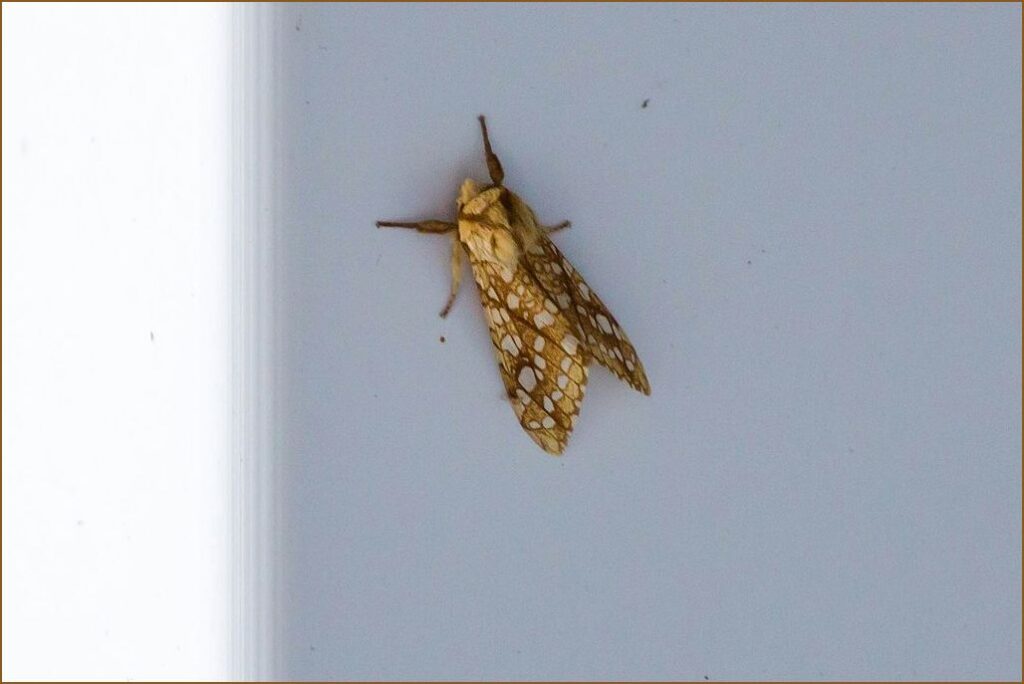
Arctiids have a thorax that comes equipped with a sound-producing organ. The moths “vocalize” to attract mates and to defend against predators, emitting ultrasonic clicks [>20,000 Hz] that advertise their identity. Because an animal that is able to make sound probably needs to be able to hear it too, Arctiids have “ears,” also located on their thorax.
— paraphrased from The Bug Lady’s Hickory Tussock Moth account
The parents die after reproducing but the young live on. When they hatch the caterpillars are toxic so they safely feed in a crowd, eating leaf tissue between leaf veins and skeletonizing leaves.
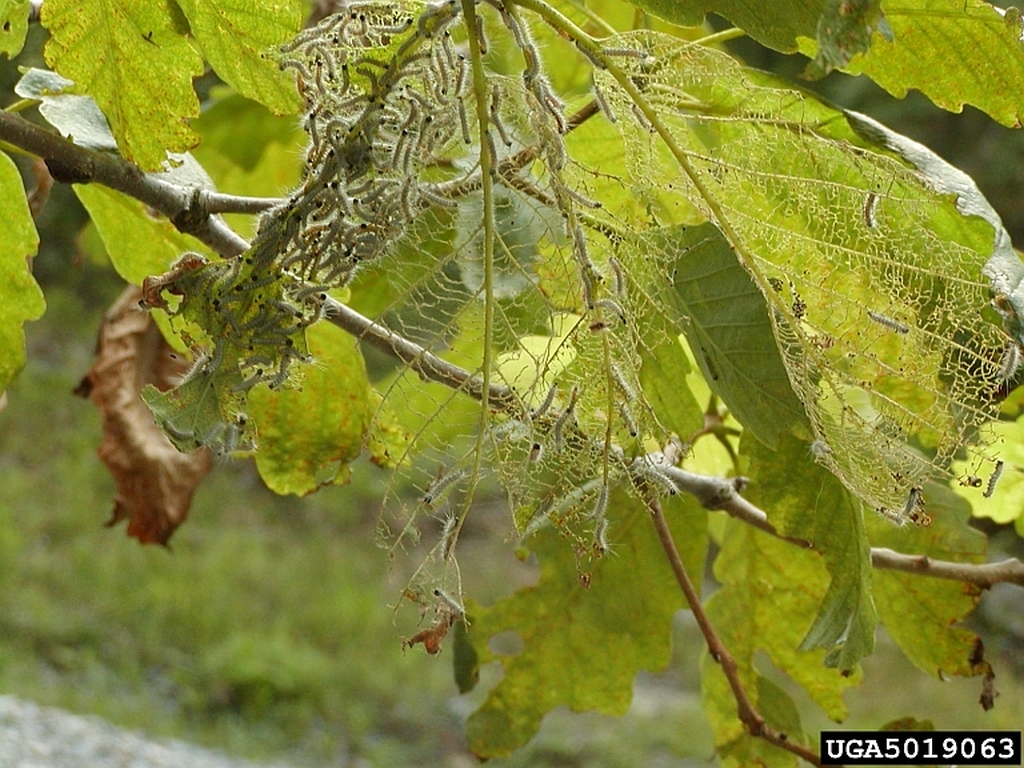
After they’ve eaten everything in sight they have to move on so they spin out an invisible thread and swing to another branch or tree. The caterpillar in my video had missed the other vegetation and was hanging over a wide gravel road. Perhaps he could see nothing green below so decided to climb the thread back up to the trees.
Read more about their life cycle in Bug Lady’s article Hickory Tussock Moth.
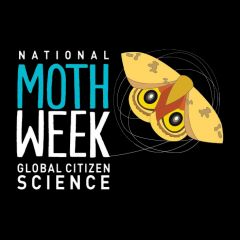
p.s. Did you know that National Moth Week is only 6 days away? 23-31 July 2022.
Help map moth distribution and life history. Attend or start a National Moth Night event (called “mothing”) to contribute scientific data about moths. Join friends and neighbors to check porch lights from time to time or set up a light and a white sheet to see what’s in your own backyard.
